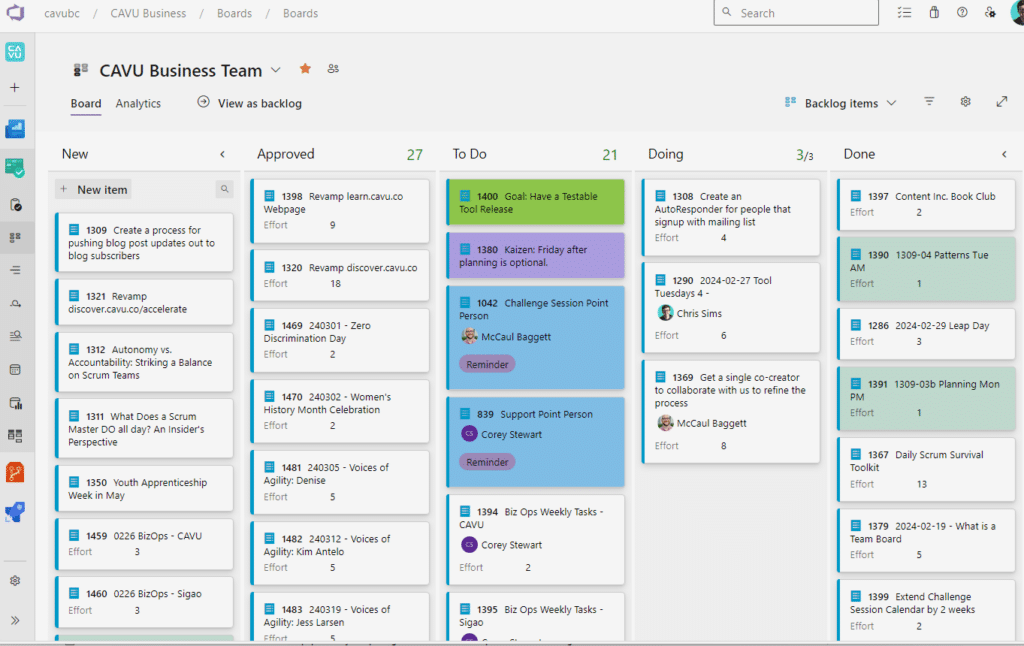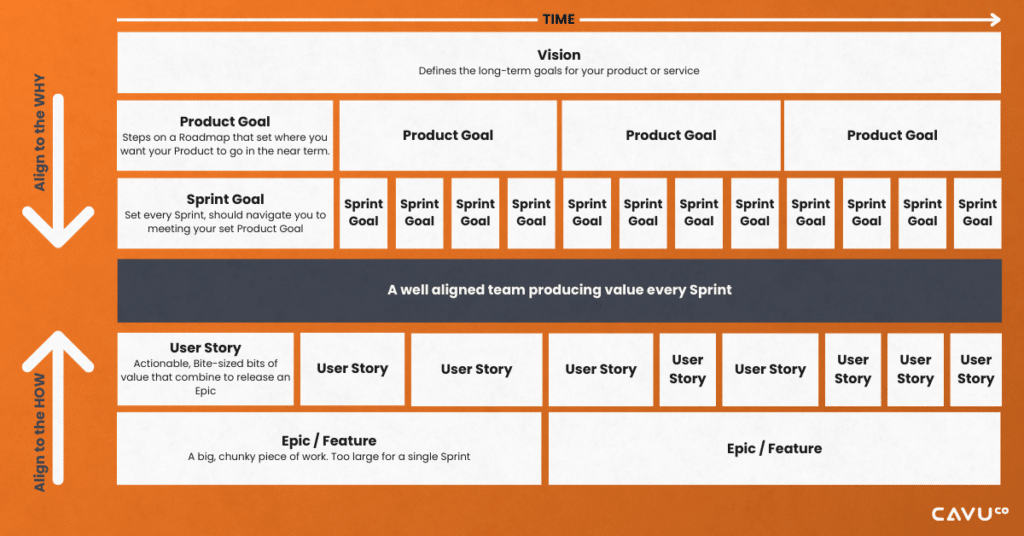As best I can tell, the Project Management Body of Knowledge (PMBOK) dedicates 15% of its teaching to change and scope management. At least, that’s what ChatGPT and Copilot tell me. I personally think that number is too low considering how much time PMs spend on doing their best to minimize change to their plan.
Plans are great, but no plan survives first contact with the enemy. Thus, the Agile Manifesto creators birthed the value of Responding to Change over Following a Plan.
In my opinion, this is probably the single biggest difference between Agile frameworks and traditional Project Management — the emphasis on making it easy to change your mind. PMBOK implements change controls, change requests, and a host of processes designed to make changes to the plan complex (seriously, have you ever had to re-baseline a project multiple times in a day???), where Agile frameworks say, go update your backlog and move on about your day.
Any Agile coach will tell you, this adherence to flexibility is the core of why Agility is so important to companies. When driving towards your destination and a pothole suddenly appears in front of you, you must react quickly to avoid it. That is what Agile empowers you to do…respond the moment the world changes around you.
Mastering the Art of Responding to Change
Transitioning from a traditional plan-driven approach to embracing Agile’s adaptability requires a mindset shift and the implementation of practices that facilitate responsiveness. Below are strategies and practices that can help teams and organizations master the art of responding to change rather than rigidly following a plan.
Foster a Culture of Open Communication

When team members feel valued and heard, they can freely share ideas without worrying about negative consequences.
Open communication is important for Agile teams to succeed. It ensures that everyone is on the same page and ready to collaborate. This collaboration helps the team work together to overcome any obstacles that may arise.
Effective communication channels, like daily stand-ups or Scrum meetings, are essential in this dynamic environment. They ensure swift communication and address changes, facilitating the early detection of potential shifts or obstacles. This practice helps team members stay aligned and work together to solve problems. It ultimately improves the team’s agility.
Emphasize Continuous Planning

Agile is best be described as “a lot of tiny plans that change frequently.” We are bad at coming up with large plans that span long time periods. We know they are going to change, so why do we waste our time on writing large fiction novels? Instead, Agility favors a clear description of outcomes (goals), and lots of mini-plans to reach those goals.
First, we create a Product Goal and roadmap. Then, we break it down into quarterly or monthly release plans. Next, we create a Sprint plan for each individual Sprint. Finally, at the narrowest level, we have the Daily plan that comes from our Daily Scrum or standup meeting.
Throughout our plan, we regularly review and adjust to ensure we are on the right track. We have opportunities to make changes at every stage. This helps us stay on course and make necessary adjustments. We are constantly monitoring our progress to make sure we are heading in the correct direction.
Sum it Up for Me
Agile’s essence is in championing adaptability over rigid adherence to pre-set plans. Agile teaches us that the path to success is not linear; it is a series of adjustments, learning, and growth.
We acknowledge that while our plans may change, our goals remain steadfast. We keep our eyes on a north star that guides us through the change to achieve our ultimate objectives.








